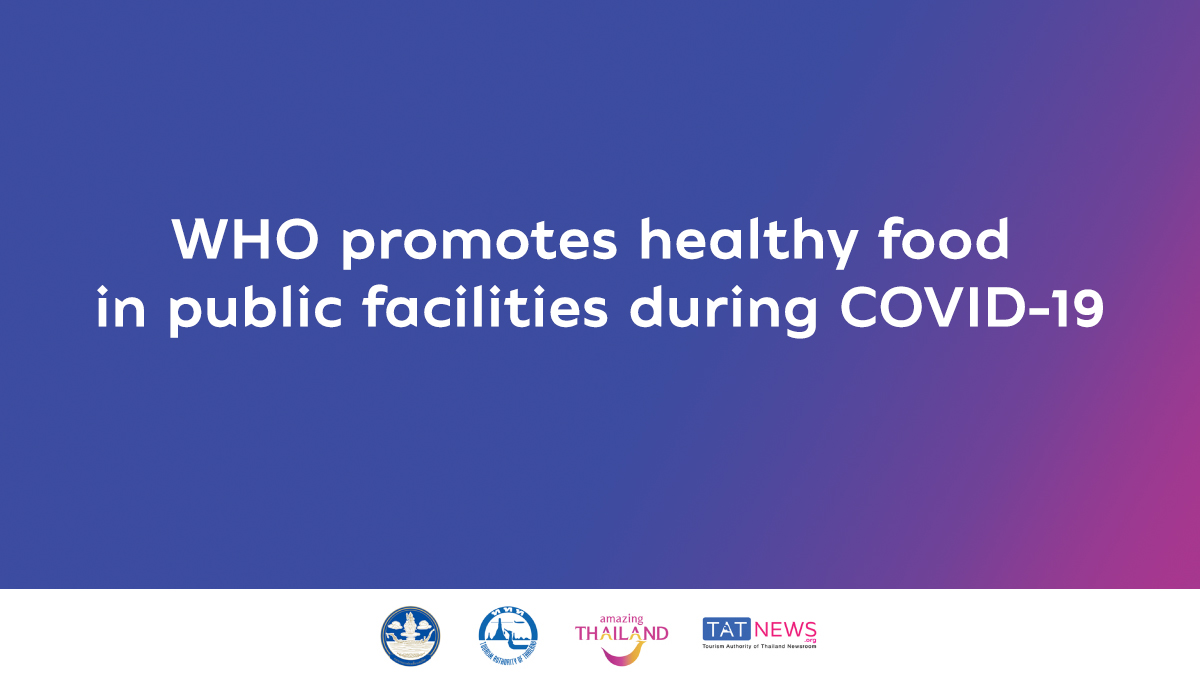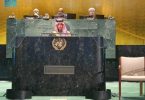
Bangkok, 20 January, 2021 – The Tourism Authority of Thailand (TAT) would like to remind all that a good diet and eating healthy, made easy by following the simple guidelines from the World Health Organisation (WHO), is important to maintaining well-being during the New Normal.
A new WHO Action framework for developing and implementing public food procurement and service policies aims to increase the availability of healthy food by setting nutritional criteria for food, particularly about being mindful of what is served and sold in public settings.
The WHO aims to reduce preventable diseases and deaths from high consumption of sodium and salt, sugars, and fats, particularly trans fats. It also seeks to add more wholegrains, legumes, vegetables, and fruits. It offers sound advice that is more important than ever during the ongoing COVID-19 pandemic that includes:
REDUCE S-S-F-F
Salt – limit sodium consumption and ensure it is iodised;
Sugar – limit the intake of free sugars;
Fat – avoid saturated fats by shifting to unsaturated fats;
Trans-fats – reduce margarine, snack foods, baked goods, and fried food.
INCREASE W-W
Wholegrains – eat more wholegrains, vegetables, legumes, fruit, and nuts;
Water – drink as much clean water as possible;
GOT NEWS? click here
Google News, Bing News, Yahoo News, 200+ publications
In Thailand, a network of health and related health professionals from Chulalongkorn University, domestic science experts, food professionals, and chronic disease patients from King Chulalongkorn Memorial Hospital (KCMH) joined forces to monitor the availability of healthy food.
Their work focused on the channel of accessibility and consumer behaviour. Ready-to-eat healthy food (RTEHF) was created to match simple criteria for calories per portion in regard to fibre, sugar, fat, and salt in accordance with the recommended daily intake.
A four-squared metre area near the KCMH outpatients building was provided for the operation. The kiosk opened in the morning from Mondays to Fridays with a consumer survey commissioned to assess satisfaction and adoption.
Sixty-two RTEHF menus were created and 50,000 portions were delivered with monthly surveys showing high satisfaction rate.
A disease-specific healthy menu book was published and disseminated to the public with over 10,000 copies downloaded overall. Large public hospitals also expressed interest to adopt this model. for social responsibility. Since 2017, KCMH administrators have now added permanent healthy food kiosks, confirming that healthy eating in a public food procurement and service system can be successfully achieved by multidisciplinary and interprofessional collaboration.
The WHO cited other examples from overseas including Brazil, where its National School Feeding Programme requires 30% of the budget to be used to purchase food from family farms, so menus can be created on fresh or minimally processed foods based on the region’s sustainability, seasonality, and agricultural diversification.
Also, the Republic of Korea has established Green Food Zones that regulate the food available within a 200-metre radius of schools to improve the health of children. In these zones, businesses may not sell food that falls above a set threshold for total sugars and saturated fats based on calories per serving.
These policies increase the availability of foods that promote healthy diets and/or limit or prohibit the availability of foods that contribute to unhealthy diets. Policies can cover the entire process of purchase, provision, distribution, preparation, service, and sale of food to ensure each step meets healthy criteria.
The world’s governments have already made multiple commitments to end all forms of malnutrition, obesity, and diet-related NCDs; such as, hypertension, cardiovascular diseases, diabetes, and cancer. The WHO’s latest Action Framework provides targets that fall under the Sustainable Development Goals for promoting health, well-being, and sustainable public food procurement practices by 2030.
To read the original article, go to WHO urges governments to promote healthy food in public facilities.






